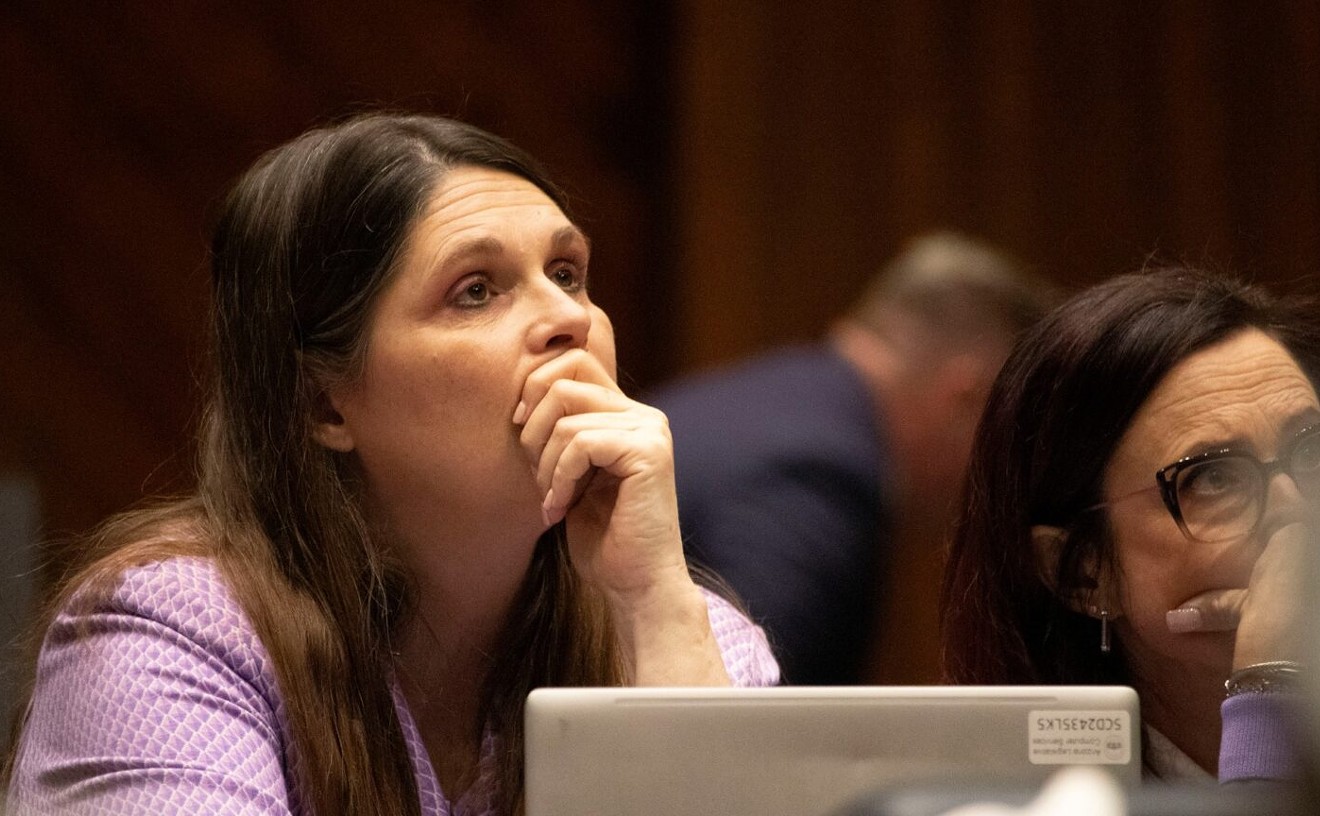A new climatology report shows that the much-heralded El Niño weather pattern this year already is winding down, having failed to soak Arizona with snow and rain.
In January, the Pacific Ocean-driven weather phenomenon spurred the state's mini-snowpocalypse in January with flurries north and south and lots of rain in metro Phoenix. Since then, the winter's brought almost no precipitation. Arizona's been drier than Arrakis and as warm as many states get in summer.
El Niño's "not done yet," but in the Southwest, "we are nearing our dry season, meaning limited time remains for additional El Niño-influenced precipitation events of significance," says CLIMAS, the University of Arizona's Climate Assessment for the Southwest center, in a report released on Thursday.
Sure, there'll probably be another wet storm in metro Phoenix as spring takes hold, like there usually is. But all signs point to the peak of the El Niño event having passed. Even worse for drought-stricken Arizona, it's possible that the hemisphere could swing into typically dry La Niña conditions later this year, CLIMAS says.
So what happened to the "Godzilla El Niño" climate forecasters were gushing about? Some states were stomped, but not Arizona. The CLIMAS report says the January storms "were followed by a persistent ridge of high pressure that set up and limited the influx of additional moisture into the Southwest. This diverted moisture resulted in well-above-average precipitation in the coastal northwestern U.S. and northern California, even while the Southwest was drier than normal, a pattern which more closely aligns with La Niña."
Just what Arizona, two decades into the worst drought in modern history, doesn't need: An El Niño that was like a dry La Niña, followed by a La Niña.
The change of heart by Mother Nature probably means that Arizona will be affected by Central Arizona Project water shortages sooner rather than later. As of January, experts were guessing that Lake Mead wouldn't fall below the dreaded 1,075-foot level in 2017, as had previously been predicted. They said it might take two years beyond that — but are now saying it might happen in 2018. If Lake Mead reaches that level, Arizona farmers would face cuts in their water supply.
Sounding a defensive note, CLIMAS says its previous forecasts had been published "without the benefit of foresight of how a persistent high-pressure ridge operating at a weather timescale (i.e., days or weeks) would knock the precipitation signal out of alignment for weeks on end."
None of this means the end of Arizona is nigh. The state has prepared for, and dealt with drought for decades, passing the Groundwater Management Act of 1980, building low-water-use housing and infrastructure and demanding that new development have a demonstrated 100-year water supply.
While the best-laid plans still can be foiled by natural and man-caused climate patterns, experts say even with continued drought, Arizona will have enough water to maintain steady population growth for a few more decades. Sometime in the mid-21st century, though, demand for water is expected to exceed supply, a situation that so far has produced a lot of urgent talk by Arizona leaders, but little action.
The stillborn El Niño and potential for especially hot and dry weather this year in already-bone-dry Arizona is bound to ramp up the stress level.
And it goes without saying that California is screwed.
[
{
"name": "Air - MediumRectangle - Inline Content - Mobile Display Size",
"component": "18478561",
"insertPoint": "2",
"requiredCountToDisplay": "2"
},{
"name": "Editor Picks",
"component": "16759093",
"insertPoint": "4",
"requiredCountToDisplay": "1"
},{
"name": "Inline Links",
"component": "17980324",
"insertPoint": "8th",
"startingPoint": 8,
"requiredCountToDisplay": "7",
"maxInsertions": 25
},{
"name": "Air - MediumRectangle - Combo - Inline Content",
"component": "16759092",
"insertPoint": "8th",
"startingPoint": 8,
"requiredCountToDisplay": "7",
"maxInsertions": 25
},{
"name": "Inline Links",
"component": "17980324",
"insertPoint": "8th",
"startingPoint": 12,
"requiredCountToDisplay": "11",
"maxInsertions": 24
},{
"name": "Air - Leaderboard Tower - Combo - Inline Content",
"component": "16759094",
"insertPoint": "8th",
"startingPoint": 12,
"requiredCountToDisplay": "11",
"maxInsertions": 24
}
]











